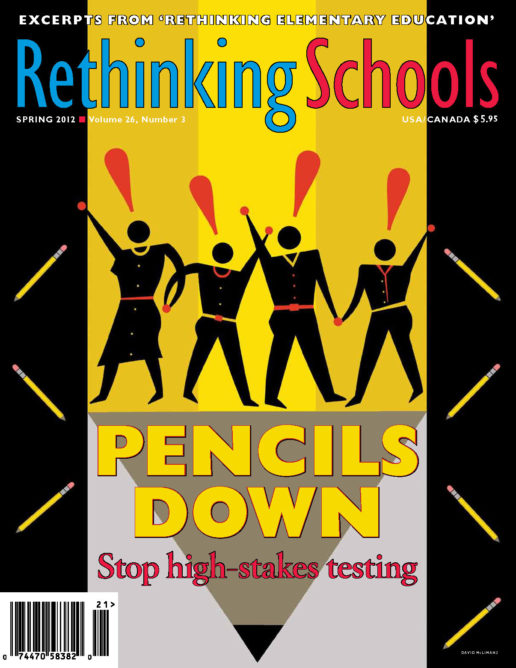Our picks for books, videos, websites, and other social justice resources 26.3
Check out these valuable resources, reviewed by Rethinking Schools editors and Teaching for Change colleagues.
Curriculum Resources
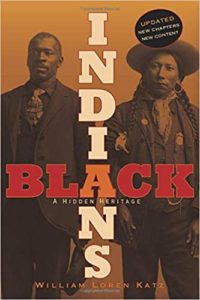
Black Indians: A Hidden Heritage
By William Loren Katz
(Atheneum, 2012–new edition)
254 pp., $19.99
We’re glad that the classic Black Indians has been updated and reissued. This startling and readable work of people’s history chronicles both the attempts to keep black people and Indians divided in the Americas, and their efforts to unite. As one French colonial document stated, “Between the races we cannot dig too deep a gulf.” But the “digging” was not always successful, and much of the drama of Katz’ book is found in the inspiring instances of black-Indian unity, as in the Seminole Wars. Two lessons in the Zinn Education Project (www.zinnedproject.org) draw on Black Indians: “The Color Line,” about conscious efforts in early America to create divisions between races; and “The Cherokee/Seminole Removal Role Play,” which helps students explore events leading up to the Trail of Tears.
Remnants of a Secret War
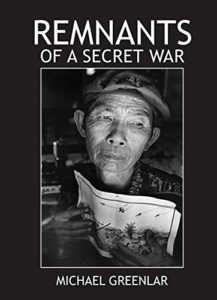
By Michael Greenlar
(Michael Greenlar, 2011)
Chachaway@aol.com
55 pp., $25
Decades after the United States’ wars in Indochina ended, U.S. bombs that didn’t explode when first dropped are still killing and maiming people there. In this haunting but strangely hopeful book of photographs, Michael Greenlar offers portraits of the ongoing effects of the “secret war” on the Hmong of Laos and intimate images of their daily lives. In the spirit of swords to ploughshares, many of his photographs concentrate on how the Hmong have incorporated the artifacts of aggression into their daily lives—cluster bomb casings turned into planter boxes and horse-feeding troughs; a grass rake forged from a bomb, pounded out on an anvil made from an artillery shell; spoons fashioned from aluminum shell casings. This is a powerful testament to the effects of war as well as a warm tribute to a people’s resilience.
Screen-Free Week
April 30 to May 6, 2012
Screen-Free Week Organizer’s Kit
www.screenfreeweek.org
69 pp., free with online registration
As the Center for a Commercial-Free Childhood (CCFC) points out, preschool children spend “an astonishing average of 32 hours a week” in front of screens—and it’s more for older children. CCFC writes, “Excessive screen time is harmful for children—it’s linked to poor school performance, childhood obesity, attention problems, and the erosion of creative play. Children who are more immersed in commercial culture are also less generous with peers and exhibit fewer positive environmental behaviors.” The Organizer’s Kit offers step-by-step advice for planning screen-free weeks. It includes rationales, research and fact sheets, children’s testimonials, alternatives to spending time in front of screens, frequently asked questions and ways to respond to skeptics, organizing tips, sample outreach materials, curriculum ideas and student handouts for teachers, and ways to extend screen-free week throughout the year. This is a valuable guide for teachers and parents alike.
DVDS
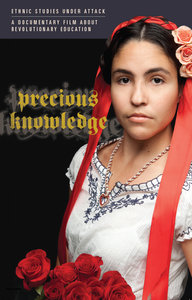
Precious Knowledge
Directed by Ari Luis Palos
Produced by Eren Isabel McGinnis
Dos Vatos Productions, 2011
70 min.
Contact Me
What a timely and important film this is. We meet the inspiring educators associated with Tucson’s embattled Mexican American Studies program, and a few of the many students whose lives have been transformed by it. And, straight from central casting, we meet the scoundrels trying to shut the program down—politicians who wrap their racism in a language of opportunity, individual rights, and Americanism. The stars of the film are the young people who establish a new relationship to life and learning through their classes and activism. As one of the students says in class: “I started thinking, ‘Oh, I’m a Chicana, I ain’t going to be able to graduate, I’m going to have kids young’. . . . And then I started coming to these classes and I started seeing, like, why am I believing all this? Instead of believing it I should change it.” Precious Knowledge raises questions for all educators about how we can more authentically speak to students’ lives in the curriculum. And it confronts us with today’s Klan 2.0—bigots who quote Martin Luther King Jr. as they shutter Mexican American Studies classes and ban books. This is an essential film for professional development, teacher education, and high school classes addressing racial justice.
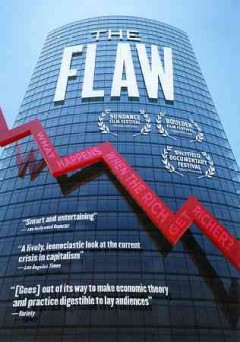
The Flaw: Markets, Money, Mortgages, and the Great American Meltdown
Directed by David Sington
(Bullfrog Films, 2011)
82 min.
The 2007–08 financial meltdown led to a global recession that the world is still struggling to recover from. The Flaw is the best film we know for explaining the financial meltdown, the crises of capitalism, and growing inequality. It provides a deeply critical and comprehensive explanation and is engaging enough to use with high school students. The film’s title comes from Alan Greenspan, one of the chief architects of the global financial meltdown, who admitted to Congress that his belief in the supposed self-correcting power of free markets was flawed. The film includes short clips of some of the world’s leading economists on the crisis and takes viewers on a tour of Wall Street by a former bond trader. The main flaw in The Flaw is a somewhat idealized, albeit brief, discussion of capitalism’s alleged “good old days.”
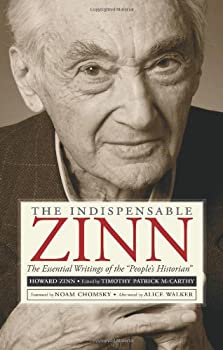
The Indispensable Zinn: The Essential Writings of the “People’s Historian”
By Howard Zinn; edited by Timothy Patrick McCarthy
(The New Press, 2012)
461 pp., $19.95
For those of us who can never get enough Howard Zinn, here is a new collection of his writing. In his foreword, Noam Chomsky sums up Zinn’s life: “Whenever there was a struggle for peace and justice, Howard was there, on the front lines, unflagging in his enthusiasm; inspiring in his integrity, engagement, eloquence, and insight; his light touch of humor in the face of adversity; his dedication to nonviolence; and his sheer decency.” Zinn brought these qualities to his writing—whether describing the events leading up to the Ludlow Massacre, the “new abolitionists” of the Civil Rights Movement, or in his wide-ranging interviews about history and politics with David Barsamian, also included in this volume. Some of these selections can be used with high school students; all of them will help educators clarify what’s worth teaching and why.
Novels
Sylvia & Aki

By Winifred Conkling
(Tricycle Press, 2011)
151 pp., $16.99
This historical novel for middle school readers is based on the true stories of Sylvia Mendez and Aki Munemitsu Nakauchi, who were 3rd graders during World War II. When Aki’s family is forced to leave their home in Westminster, Calif., for a Japanese American internment camp in Arizona, the Mendez family moves into their home. Sylvia Mendez looks forward to her first day of school, only to be told she and her siblings cannot enroll, although her lighter skinned cousins can. This leads to the groundbreaking Mendez v Westminster desegregation lawsuit that preceded Brown v Board of Education. Meanwhile, Aki worries every day about her father, who is interned separately for most of the war. The chapters alternate between the experiences of Sylvia and Aki, introducing readers to the daily injustices of internment and school segregation.
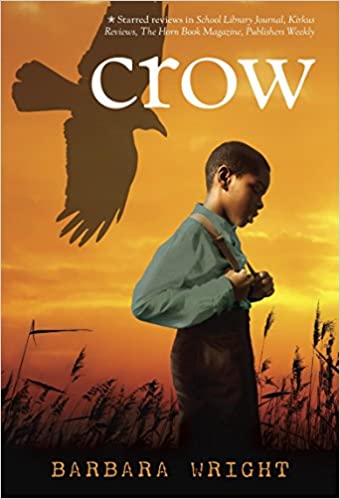
Crow
By Barbara Wright
(Random House, 2012)
298 pp., $16.99
With voter disenfranchisement in the news today, here is a historical novel about the brutal repression of African American voters that brought an end to the short-lived Reconstruction era. Shining a light on the seldom-told story of the 1898 Wilmington Massacre, Wright creates the character of 5th grader Moses Thomas, whose father is an alderman and a reporter for the Wilmington Daily Record, the only African American paper in the South. Through young Thomas’ adventures and his conversations with his grandmother, who lived for decades in slavery, readers learn about day-to-day life in the black community. The tension mounts as signs increase of the white supremacist Red Shirts’ plans to use violence to prevent blacks from voting and to shut down the paper. The book includes many real people and events.
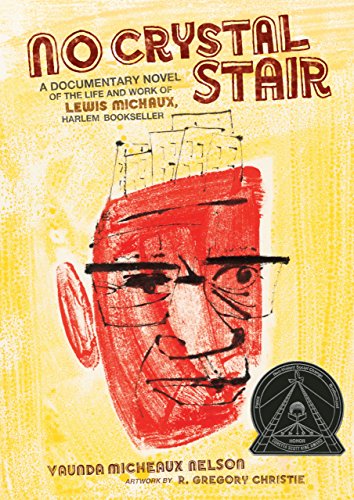
No Crystal Stair: A Documentary Novel of the Life and Work of Lewis Michaux, Harlem Bookseller
By Vaunda Micheaux Nelson
Artwork by R. Gregory Christie
(Carolrhoda Books, 2012)
188 pp., $17.95
Finally, a book to honor Lewis Michaux, whose Harlem bookstore was a center of African American history, scholarship, debate, and activism from 1932 to 1974. Referred to as the “House of Common Sense and the Home of Proper Propaganda,” the store had more than 200,000 texts and doubled as a library and meetinghouse. As appropriate to honor a noted bookseller, No Crystal Stair is a beautiful and unique text, designed in the form of a scrapbook. It is full of diary-like chronological entries—written in the voices of Michaux, his family, and those who frequented the store, including Malcolm X and Nikki Giovanni—interspersed with reports from Michaux’s FBI files, newspaper reports, photos, and Christie’s gorgeous illustrations. This is an honest and engaging story for grades 7 and up.
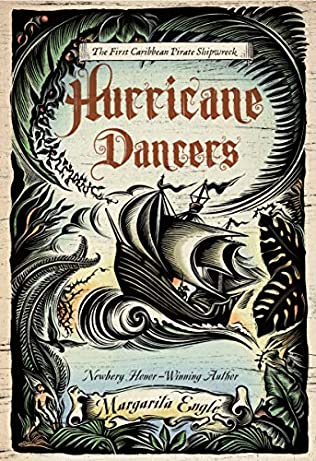
Hurricane Dancers: The First Caribbean Pirate Shipwreck
By Margarita Engle
(Henry Holt and Co., 2011)
160 pp., $16.99
Cuban American novelist Margarita Engle’s award-winning book of young adult historical fiction takes the form of poetry about the conquest and resistance. The main character is a young man whose mother is Taíno and father is Spanish. Pirates hold him captive and use him as a translator. After a shipwreck he escapes and finds a Taíno community, only to be confronted again by his captors and the opportunity to determine their fate. The rich language in this book makes it enjoyable, informative, and engaging for children and adults. For example:
All faces turn toward me,
both the painted ones
and the bearded.
I am the only one in this cave
who understands
two languages.
My quiet voice feels
like a small canoe
gliding back and forth
between worlds
made of words.
Picture Book
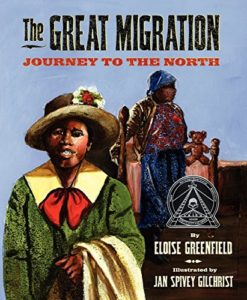
The Great Migration: Journey to the North
By Eloise Greenfield
Illustrated by Jan Spivey Gilchrist
(Amistad/HarperCollins, 2011)
32 pp., $16.99
This is a picture book that introduces the historic story of the Great Migration to young readers. Eloise Greenfield, one of the most important children’s book writers of the last 40 years, wrote about her family migration from Parmele, N.C., to Washington, D.C., in Childtimes: A Three-Generation Memoir for upper elementary school. Now she has collaborated with Jan Spivey Gilchrist to describe the push factors and the journey north to an even younger audience. Gilchrist’s stunning collages make you want to stop and soak in each page.

